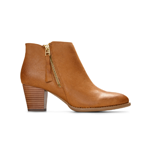
Why Shoe Sole Material Matters More Than You Think
 Sole material is the unsung hero of footwear, providing the frontline defensive barrier
between your foot and the ground. Without a high-quality shoe sole material, you may as well be walking
barefoot, inviting a range of potential injuries and other risks.
Sole material is the unsung hero of footwear, providing the frontline defensive barrier
between your foot and the ground. Without a high-quality shoe sole material, you may as well be walking
barefoot, inviting a range of potential injuries and other risks.
Sole material, and shoe comfort, in general, are more important than you might realize. Studies show that over 60% of Americans wear shoes that hurt their feet, and one-third say that foot pain has sidelined them from everyday activities. If you’ve been suffering from footwear woes, sole material might be at the bottom of it (pun intended).
Shoe sole material is a fundamental aspect of footwear design, determining the overall comfort, support, and durability of a shoe. Read on to discover our comprehensive guide on sole material, including its role in foot health, performance quality, durability, and more.
The Role of Shoe Sole Material in Foot Health
A whopping 78% of Americans report foot problems from uncomfortable shoes. You may assume this has to do with the price of fashion—after all, wearing high-heeled shoes will inevitably cause pain and discomfort, right? But the truth is, any type of shoe, whether it’s a flat or a platform, should facilitate your foot comfort, not impede it.
Shoe sole materials play a pivotal role in shoe comfort and resistance and, as a result, foot health overall. If you’re struggling with chronic foot pain, the problem may not be the shoe style or fit—it might have to do with the material and durability of the sole’s construction.
Consider these ideal sole characteristics in your footwear:
- Low heel – Too much heel elevation has been linked to various negative effects, such as foot pain, strained muscles and joints, and even a condition called lordosis, aka excessive inward curving of the spine. This is why you’ll find a broad, deep-heel cup in our Walkers, featuring flexibility and support for all-day wear.
- Flexible sole – Shoes with flexible soles allow your feet to adopt their natural walking pattern, mimicking the experience of walking barefoot while still providing necessary support and protection. By encouraging biological foot mechanics, a flexible sole will also make your feet stronger, which makes you less prone to developing flat feet and other issues.
- Arch support – Proper arch support is crucial in healthy foot alignment, helping prevent imbalance, painful strain, flat feet, and more. Plus, poor arch support has also been proven as a cause of plantar fasciitis, one of the most common culprits of heel pain.
- Cushioning and shock absorption – Without adequate cushioning on the sole, your shoes won’t be able to absorb the shock that comes from your foot hitting the ground. Shock absorption minimizes harmful pressure on your joints, helping prevent serious injury.
At Vionic, we’ve kept all these factors in mind—our footwear is designed with contoured footbeds, flexible soles, and shock-absorbing technology.
Preventing Common Injuries
Many foot issues can be easily prevented by simply seeking out the right shoe sole materials. First, consider traction and stability. If your shoe slips around on uneven or wet surfaces, you’re one misstep away from a twisted ankle. Even a rubber sole without any grip on laminate flooring can cause a foot or ankle injury.
Sole material is more than just the what of a shoe’s underside. It also plays an important role in foot alignment—that is, how your feet move, position, and connect with the ground. The sole provides support, stability, and balance throughout the day, and absorbs shock from high-impact activities. Without these benefits, you’re more prone to injuries and long-term pain.
Low-quality or improper sole materials can lead to a range of footwear-related injuries, including:
- Plantar fasciitis
- Flat feet
- Joint pain and swelling
- Knee pain
- Blisters
- Heel pain
- Ingrown toenails
- Pinched nerves
- Heel spurs
- Sprained ankle
Remember that everyone has different foot shapes, so once you cover the basics in this guide, the best sole material will depend on your unique needs and health concerns (more on that in a minute).
Performance Benefits of Quality Shoe Sole Material
You don’t have to be a competitive athlete to consider the performance qualities of your footwear. Whether you’re on your feet all day at work, hiking on the weekends, or jetting across the airport to your next international voyage, sole material promotes foot health and overall comfort.
All shoes undergo everyday wear and tear, so a high-quality sole is essential to provide the following:
- Traction – The ideal sole has a tread pattern designed for traction, or the friction between your shoe and the ground. Traction is especially important in inclement weather or on wet indoor surfaces. Without a high-quality sole, you’re more likely to slip and fall.
- Stability – A sturdy yet flexible sole provides the perfect toe-to-heel stability. If a sole becomes too worn and thin, or is made with flimsy materials, you may feel off-balance.
- Cushion – Supportive soles provide necessary shock absorption to protect your joints and muscles, which is especially important during high-impact activities like workouts. At Vionic, our collection of specialized walking sneakers, which includes the Walk Strider Sneaker, features VIO MOTION™ Technology footbeds to withstand shock and provide arch support.
- Fluid movement – Flexible, lightweight soles allow your feet to move as they are meant to, providing the stability to prevent injury without restricting natural movement. Check out the Walk Max Lace Up Sneaker, featuring our most lightweight midsole yet, enhancing your stride in one of five sleek colors.
With a flexible yet supportive sole, you’ll have the freedom to move wherever your day takes you.
Comparing the Best Shoe Sole Material
Shoe soles come in many shapes and sizes, and the type of material usually has to do with footwear function. For instance, you wouldn’t expect the same adaptability from a waterproof sandal as you would from a walking sneaker.
Let’s break down three of the most common and versatile materials for shoe soles.
EVA Soles
EVA is a flexible foam material made from polymer plastics. It excels as a shoe sole thanks to its lightweight nature, cushioning properties, and natural moldability. The shock absorption of EVA shoe material is perfect for walking and other active shoes.
Rubber Soles
Natural rubber provides a sturdy outsole with unbeatable traction and durability. When you’re investing in a long-term shoe, you can’t go wrong with rubber soles. Plus, it’s a waterproof material, which comes in handy for poolside summer days.
Polyurethane and Other Synthetics
Polyurethane is a synthetic polymer used as a foam material for shoe soles. It can easily be made more or less flexible depending on the desired shock absorption. Other synthetics, such as synthetic rubber, can also be specifically developed for use in durable shoe soles.
Tips for Selecting the Right Shoe Sole Material
So, now that you understand the importance of shoe sole material, you may still be wondering: what’s the best material for me? There are various lifestyle factors to consider, but we want to highlight two key aspects:
- Exercise habits – How much you walk, run, or take fitness classes will influence the type of sole you need. For instance, if you often use your sneakers on indoor flooring, you’ll want to feel secure with enhanced grip. If you put in miles of power walking in a day, you need proper cushioning and shock absorption to protect your joints.
- Arch shape – How can you tell if you have flat feet or high arches? Step in water and then stand on a piece of cardboard. The less water in your footprint, the higher your arch; the more water, the flatter your feet. If you have high arches, you’ll need soles with extra cushioning to better absorb shock and minimize pressure on your arches. The best shoes for flat feet feature a contoured sole and deep heel cup, like the Kearny Platform Lace Up Sneaker and the Walker Sneaker.
If you’re still unsure where to start, you can have your feet professionally fitted or consult with a podiatrist.
Long-Term Implications of Shoe Sole Material Selection
No matter the sole that’s best for your feet, one thing is universal: choosing a sole material for shoes’ long-term wear and tear. High-quality, durable shoe sole materials are a must for enjoying your footwear for years to come.
An investment in a high-quality sole is also an investment in your foot health. Soles that lack cushioning, are made from low-quality materials, or provide no flexibility will not only wear down faster, but are more likely to cause pain and injury.
Upgrade Your Shoe Sole Game with Vionic
At Vionic, prioritizing foot fashion does not mean sacrificing foot health. From casual sneakers to recovery shoes, we’re committed to stylish footwear for all-day comfort.
Our shoes are crafted with high-quality materials, from leather uppers to EVA outsoles and everything in between. Browse recovery shoes with VIO MOTION™ Technology footbeds for dreamy comfort with every stride. Plus, try sneakers with a Vio Flex insole for enhanced breathability and moisture-wicking properties to avoid sweaty feet.
Don’t overlook the importance of shoe sole material. Browse our collections today to take the first step toward improved foot health and comfort.
Sources:
American Podiatric Medical Association. NewsWorthy Analysis Foot Ailments Survey. https://www.apma.org/files/FileDownloads/APMAFootAilmentsSurveyNewsWorthyAnalysis012309.pdf.
Time. These Are the Healthiest Shoes To Wear, According to Scientists. https://time.com/5294580/healthy-shoes-footwear/.
National Library of Medicine. Impact of routine footwear on foot health: A study on plantar fasciitis. https://www.ncbi.nlm.nih.gov/pmc/articles/PMC9648311/.
We Treat Feet Podiatry. Choosing the Right Shoes for Optimal Foot Health. https://wetreatfeetpodiatry.com/choosing-the-right-shoes-for-optimal-foot-health.
University of Pittsburgh. Shoe Tread Research Gains Traction. https://www.pitt.edu/pittwire/features-articles/shoe-tread-research-gains-traction.
Shoemakers Academy. Shoe Materials: EVA Midsoles. https://shoemakersacademy.com/shoe-materials-eva-midsoles/.
Britannica. Polyurethane. https://www.britannica.com/science/polyurethane.









